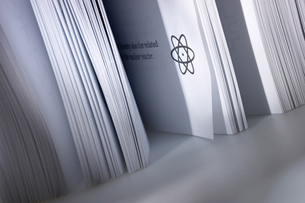Module 1 Intro
1. Module 1 Intro
1.26. Page 4
Module 1—Chemical Foundations
 Reflect and Connect
Reflect and Connect
Draw cartoons representing physical, chemical, and nuclear changes. Ensure your artwork illustrates the similarities and differences between the three types of change. Incorporate an understanding of the particle model of matter and the kinetic molecular theory. Share your cartoons with your teacher. Place copies of your cartoons into your chemistry folder, along with any comments and revisions you make based on teacher feedback.
 Discuss
Discuss
Based on your research, post a message on the bulletin board that states your position for or against the use of nuclear technology. Give a brief explanation supporting your position. How have the lessons in Module 1 reshaped your views of nuclear technology? Feel free to comment on other opinions. Place a copy of your posting into your chemistry folder.
 Reflect on the Big Picture
Reflect on the Big Picture

© 2007 Jupiterimages Corporation
In Module 1 you learned about the role of science and technology in society, elements and ions, ionic compounds, molecular compounds, chemical change, and the kinetic molecular theory. You explored the roles of modelling, evidence, and theories when explaining and understanding the structure, bonding, and properties of ionic and molecular compounds. Throughout the module you studied these concepts in the context of nuclear energy, shaping your perspectives and understandings of nuclear technology.
 Assessment
Assessment
You should now have all the information you need to complete your final module project. Submit your project to your teacher when you are finished. Use the following guide to ensure your project covers all aspects of the project.
A mark out of 5 will be given for each project component according to the following guidelines.
Score |
Criteria |
|---|---|
5
Excellent |
The student demonstrates an excellent understanding of the component of the project and fully and correctly supports opinions using relevant facts and details.
Statements made in the response are organized, unambiguous, and are supported explicitly but may contain a minor error or have minor omissions. |
4
Good |
The student demonstrates a good understanding of the component of the project and fully and adequately supports opinions using facts and details.
Statements made in the response are unambiguous, mostly complete, mostly correct, but may contain errors. |
3
Satisfactory |
The student demonstrates a basic understanding of the component of the project.
Statements made in the response may be disorganized, ambiguous, incomplete, and may lack support. |
2
Limited |
The student demonstrates a limited understanding of the component of the project.
Statements made in the response lack details, clarity, and support. |
1
Poor |
The student provides a solution that contains a relevant statement that begins to address the objective of the project component. |
0
Insufficient |
The response is incorrect and/or totally off topic. |
Your project will be assessed based on the following criteria.
Project Components |
Weighting |
|---|---|
clearly states a position and supports it by evaluating risk-benefit of nuclear technology |
5 |
communicates ideas using appropriate strategies |
5 |
considers complex issues from multiple perspectives |
5 |
Demonstration of Specific Knowledge |
Weighting |
Lesson 2 Research
|
5 |
Lesson 3 Research
|
5 |
Lesson 4 Research
|
5 |
Research Skills |
Weighting |
| appropriate selection of resources representing a range of viewpoints | 5 |
| proper citation of sources at the conclusion of the project (e.g., a bibliography) | 5 |
|
Total of 40 marks |
Complete the final module project, and submit it to your teacher.